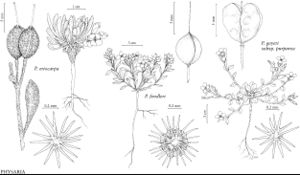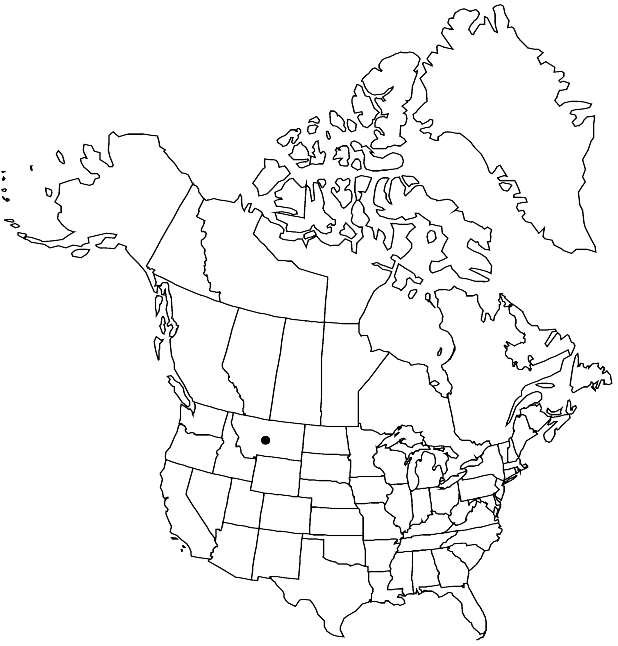Physaria eriocarpa
Novon 17: 184, fig. 3. 2007.
Perennials; caudex branched, (thickened, cespitose); densely pubescent, trichomes 5-rayed or 6-rayed, rays slightly fused at base, furcate or bifurcate, (tuberculate throughout). Stems few from base, well-exserted from basal leaves, 0.4–1 (–1.2) dm. Basal leaves: blade (erect), obovate to orbicular, 1.5–2.5 cm, (base evidently distinct from petiole), margins entire, (folded). Cauline leaves: blade spatulate, margins entire. Racemes compact, subumbellate. Fruiting pedicels (ascending, curved to slightly sigmoid), 5–8 mm. Flowers: sepals (pale-yellow), 4–5 mm; petals lingulate, 6–7 mm. Fruits ovoid to ellipsoid, slightly inflated, (apex not compressed), 3–4 mm; valves pubescent, trichomes erect on mature fruits, (± appearing fuzzy); ovules 8 per ovary; style 4–5 mm, (glabrous). Seeds plump.
Phenology: Flowering Jun–Jul.
Habitat: Windswept ridge lines and mountain peaks in limestone rubble and cobbles
Elevation: 2600-3000 m
Discussion
Of conservation concern.
Physaria eriocarpa is known from Sheep Mountain.
Selected References
None.
Lower Taxa
"not" is not a number. "elongated" is not a number."thick" is not a number."dm" is not declared as a valid unit of measurement for this property."dm" is not declared as a valid unit of measurement for this property.

